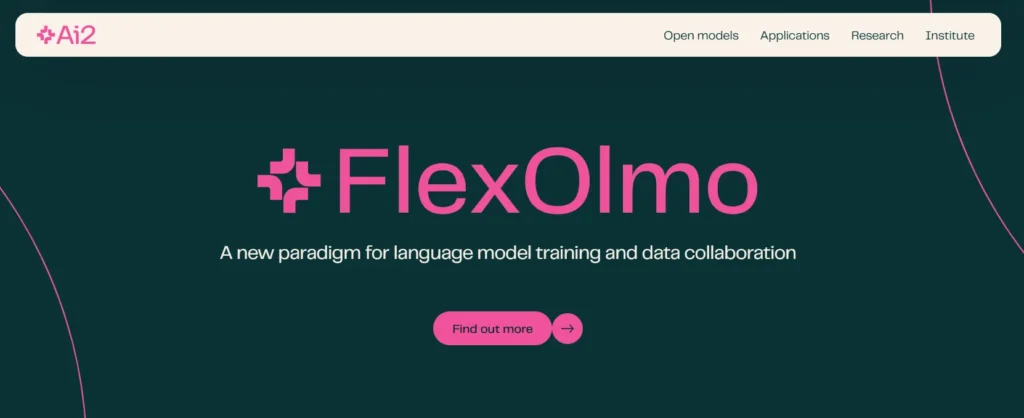The U.S. National Science Foundation and NVIDIA just announced a $152 million public-private partnership that could reshape how scientists use artificial intelligence.
The move, revealed August 14, taps the Allen Institute for AI (Ai2) to build fully open multimodal AI models designed for U.S. researchers—an explicit bid to boost scientific breakthroughs and secure America’s edge in the global AI race.
Key Takeaways:
- NSF and NVIDIA commit $152M to open AI for science.
- Ai2 will build multimodal AI models for U.S. researchers.
- White House AI plan backs partnerships to secure U.S. dominance.
- Early targets: new materials, protein modeling, AI model weaknesses.
- Move comes as AI security threats draw scrutiny at Black Hat 2025.
The NSF and NVIDIA announced a $152 million partnership with Ai2 to create fully open AI models for scientific discovery. The initiative, called OMAI, aims to accelerate breakthroughs in materials science, biomedical research, and AI reliability—aligning with the White House AI Action Plan to ensure U.S. leadership in AI innovation.
A $152M Bet on Open AI for Science
On August 14, 2025, the U.S. National Science Foundation (NSF) revealed a landmark collaboration with NVIDIA, pledging $75 million from NSF and $77 million from NVIDIA to fuel the Open Multimodal AI Infrastructure to Accelerate Science (OMAI). The project will be led by the Allen Institute for AI (Ai2), a nonprofit research lab known for its focus on open and transparent AI.
“This is about securing U.S. global leadership in science and technology,” said Brian Stone, performing the duties of NSF director, in a statement. “By equipping America’s scientists with AI tools, we can accelerate breakthroughs once thought impossible.”
Why Now?
The announcement lands just weeks after Black Hat USA 2025 highlighted the vulnerabilities of today’s large language models, from smart home hijacks via Google Gemini to zero-day exploits in CyberArk and HashiCorp tools. Those demonstrations underscored the urgency of building trustworthy, open AI models that scientists—and the public—can scrutinize.
By aligning with the White House AI Action Plan, NSF and NVIDIA aim to showcase that the U.S. can lead not just in proprietary AI, but also in open, accountable systems.

What OMAI Will Do
The partnership focuses on building multimodal AI—models capable of interpreting text, images, proteins, and more. Initial use cases include:
- Accelerating the discovery of new materials for energy and manufacturing.
- Improving protein function prediction to fast-track biomedical advances.
- Tackling core weaknesses in large language models, such as reasoning failures.
Ai2 will host and maintain the models openly, ensuring U.S. researchers—from universities to national labs—can access them without the restrictions typical of closed corporate systems.
Expert Voices
“Fully open models are critical if we want reproducible science,” said Dr. Oren Etzioni, founding CEO of Ai2 (Wired, 2024). “Closed AI may win markets, but open AI wins trust.”
Industry analysts also noted NVIDIA’s strategic interest. “This gives NVIDIA influence beyond GPUs—it positions them at the center of U.S. science infrastructure,” said Sarah Kreps, professor of tech policy at Cornell (Foreign Affairs, 2025).
Why It Matters
The NSF–NVIDIA partnership is more than just a funding announcement. It’s a statement: that the U.S. intends to lead the global AI race not only through speed and scale, but also through openness and trustworthiness.
That matters for global competitiveness—and for ordinary Americans. If successful, this project could accelerate drug discovery, enable safer materials, and build more reliable AI for use in schools, labs, and hospitals.
Reader Impact
For everyday readers, the impact may feel indirect at first—but it’s real. Faster material discovery could mean cheaper, longer-lasting batteries. Improved protein modeling could lead to new treatments and cures. And by funding open AI, the U.S. ensures that breakthroughs benefit the public, not just big tech firms.
Numbers to Watch
- $152M: Total funding for NSF–NVIDIA’s OMAI project.
- $450K: NSF grant to Washington State University for AI cybersecurity exchanges.
- 100+ sessions: Black Hat 2025 talks focused on AI exploits and vulnerabilities.
What’s Next
- Ai2 to release first open model suite in 2026.
- NSF to expand AI funding opportunities for universities and labs.
- White House AI Action Plan partnerships to deepen with industry.
- Cybersecurity standards for open models expected by 2026.
Conclusion
The NSF–NVIDIA partnership marks a turning point: open AI models are no longer just a research experiment—they’re a national priority. If the bet pays off, U.S. scientists could leap ahead in materials, medicine, and reliable AI. But the real test is yet to come: can open AI stay secure while driving innovation?
